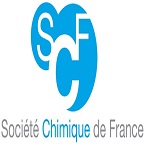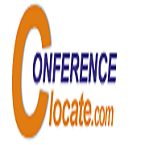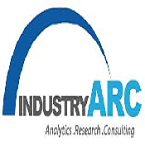Sessions and Tracks
Track 1: Cell Therapy
Cell Therapy is the transfer of cells into a patient with a goal of improving the disease. From beginning blood transfusions were considered to be the first type of cell therapy to be practised as routine. Later, Bone marrow transplantation has also become a well-established concept which involves treatment of much kind of blood disorders including anemia, leukaemia, lymphoma and rare immunodeficiency diseases. Alternative medical practitioners perform cell therapy in the form of several different names including xenotransplant therapy, glandular therapy, and fresh cell therapy. It has been claimed by the proponents of cell therapy that it has been used successfully to repair spinal cord injuries, strengthen weaken immune system, treats autoimmune diseases like AIDS, help patients with neurological disorders like Alzheimer’s disease, Parkinson’s disease and epilepsy.
Track 2: Gene therapy
Gene Therapy basically involves the introduction or alteration of genetic material within a cell or organism with an intention of curing the disease. Both cell therapy and gene therapy are overlapping fields of biomedical research with the goals of repairing the direct cause of Genetic diseases in DNA or cellular population respectively, the discovery of recombinant DNA technology in the 1970s provided tools to efficiently develop gene therapy. Scientists use these techniques to readily manipulate viral genomes, isolate genes and identify mutations involved in human disease, characterize and regulate gene expressions, and engineer various viral and non-viral vectors. Various long-term treatments for anaemia, haemophilia, cystic fibrosis, muscular dystrophy, Gauscher’s disease, lysosome storage diseases, cardiovascular diseases, diabetes and diseases of bones and joints are resolved through successful gene therapy and are elusive today.
Track 3: Cell and Gene therapy products
Articles containing or consisting of human cells or tissues that are intended for implantation, transplantation, infusion, or transfer to a human recipient. Gene therapies are novel and complex products that can offer unique challenges in product development. Hence, ongoing communication between the FDA and stakeholders is essential to meet these challenges. Gene therapy products are being developed around the world, the FDA is engaged in a number of international harmonization activities in this area.
Examples: Musculoskeletal tissue, skin, ocular tissue, human heart valves; vascular graft, Dura mater, reproductive tissue/cells, Stem/progenitor cells ,somatic cells, Cells transduced with gene therapy vectors , Combination products (e.g., cells or tissue + device)
Track 4: Cellular therapy
Cellular therapy, also called live cell therapy, cellular suspensions, glandular therapy, fresh cell therapy, sick cell therapy, embryonic cell therapy, and organ therapy refers to various procedures in which processed tissue from animal embryos, fetuses or organs, is injected or taken orally. Products are obtained from specific organs or tissues said to correspond with the unhealthy organs or tissues of the recipient. Proponents claim that the recipient's body automatically transports the injected cells to the target organs, where they supposedly strengthen them and regenerate their structure. The organs and glands used in cell treatment include brain, pituitary, thyroid, adrenals, thymus, liver, kidney, pancreas, spleen, heart, ovary, testis, and parotid. Several different types of cell or cell extract can be given simultaneously - some practitioners routinely give up to 20 or more at once.
Track 5: Cancer gene therapy
Cancer therapies are drugs or other substances that block the growth and spread of cancer by interfering with specific molecules that are involved in the growth, progression, and spread of cancer. Many cancer therapies have been approved by the Food and Drug Administration to treat specific types of cancer. The development of targeted therapies requires the identification of good targets that is, targets that play a key role in cancer cell growth and survival. One approach to identify potential targets is to compare the amounts of individual proteins in cancer cells with those in normal cells. Proteins that are present in cancer cells but not normal cells or that are more abundant in cancer cells would be potential targets, especially if they are known to be involved in cell growth or survival.
Track 6: Cell Science & Stem Cell Research
Stem cell technology is the subject of much discussion and interest across the world. Newspapers and websites frequently report new discoveries, and this fast-paced field has been the focus of hope, excitement and sometimes controversy. Policy makers, regulators, researchers, clinicians and scientists are constantly debating the progress and potential applications of this exciting science. This Stem cell global strategic report will help us to understand unique product opportunities by stem cell type, derive more revenue from products sold to stem cell scientists, and identify new product growth opportunities before the competition. Use the Survey of Stem Cell Scientists & researchers to understand technical requirements, unmet needs, and purchasing preferences of stem cell researchers worldwide.
Track 7: Cell Culture & Bioprocessing
Getting cell therapy products onto the market as quickly as possible still remains a key driver in the improve of recombinant therapeutic proteins. Any such advance in bioprocessing is of particular interest to the industry if it considerably shortens the development timeline or improves the end product. In the monoclonal antibody area, platform procedures have allowed companies to regulate on particular mammalian cell lines, transfection approaches, process conditions and also downstream processing to shorten the development timeline.
Track 8: Cancer Gene Therapy
Initially, scientists followed gene therapy for the administration of genetic material to treat genetic disorders, and it was soon adapted for cancer treatment. Approximately two-thirds of the clinical trials in gene therapy have been designed at the treatment of various types of cancers. Cancer Gene Therapy Market size was USD 805.5 million in 2015, with 20.7% CAGR estimation from 2016 to 2024; as per a new global strategic research report. Globally, increasing cancer prevalence will rise demand for gene therapy as the effective personalized treatment choice. According to WHO, cancer incidence is estimated to rise by 50% to reach 15 million by the end of this decade. This increase in number of patients needs this as a potential treatment approach addressing the growing global burden of the disease.
Track 9: Diabetes Gene Therapy
Recent developments in the field of molecular and cell biology may allow for the growth of novel strategies for the therapy and cure of type 1 diabetes. In particular, it is now possible to predict restoration of insulin secretion by gene or cell-replacement therapy. Diabetes mellitus is growing globally affecting more than 180 million people worldwide. This is mostly type 2 diabetes and, because of the growth in the aging population and massive increase in prevalence of obesity, the incidence is likely to be more than doubled by 2030.
Track 10: Vectors for Gene Therapy
According to the new research Global strategic report Gene Therapy Market Forecast to 2020, a major focus has been on the on-going clinical trials for the growth of innovative products using different vectors. Increasing number of clinical trials and availability of wide range of genes and vectors used in these trials will enable emergence of new therapy modalities to help make cancer a manageable disease. By the end of 2012, the expected number of clinical trials crossed 1,800 worldwide.
Track 11: Gene Therapy Commercialization
The major theme of this is whether gene therapy can attain commercial success by the early-to-mid 2020s, which types of gene therapy programs have the greatest likelihood of success, and what hurdles might stand in the way of clinical and commercial success of leading gene therapy programs. Asynchrony between the maturation of gene therapy technologies and capital investment in development-focused business models may have stalled the commercialization of gene therapy.
Track 12: Cell & Gene Therapy Products
The Center for Biologics Evaluation and Research controls cellular and gene therapy products and certain devices related to cell and gene therapy. In addition to regulatory oversight of clinical studies, it also provides proactive scientific and supervisory advice to medical and clinical researchers and manufacturers in the area of novel product development.
Track 13: Skin cell therapy
Stem cells have newly become a huge catchphrase in the skincare biosphere. Skincare specialists are not using embryonic stem cells; it is impossible to integrate live materials into a skincare product. Instead, scientists are creating products with specialized peptides and enzymes or plant stem cells which, when applied topically on the surface, help to protect the human skin stem cells from damage and deterioration or stimulate the skins own stem cells. Currently, the technique is mainly used to save the lives of patients who have third degree burns over very large areas of their bodies
Track 14: HIV gene therapy
Highly active antiretroviral therapy dramatically improves survival in HIV-infected patients. However, persistence of HIV in reservoirs has necessitated lifelong treatment that can be complicated by cumulative toxicities, incomplete immune restoration, and the emergence of drug-resistant escape mutants. Cell and gene therapies offer the promise of preventing progressive HIV infection by interfering with HIV replication in the absence of chronic antiviral therapy.
Track 15: Viral gene therapy
Converting a virus into a vector the viral life cycle can be divided into two temporally distinct phases: infection and replication. For gene therapy to be successful, an appropriate amount of a therapeutic gene must be delivered into the target tissue without substantial toxicity. Each viral vector system is characterized by an inherent set of properties that affect its suitability for specific gene therapy applications. For some disorders, long term expression from a relatively small proportion of cells would be sufficient (for example, genetic disorders), whereas other pathologies might require high, but transient, gene expression. For example, gene therapies designed to interfere with a viral infectious process or inhibit the growth of cancer cells by reconstitution of inactivated tumor suppressor genes may require gene transfer into a large fraction of the abnormal cells.
Track 16: Genetically inherited diseases
A genetic disease is any disease that is caused by an abnormality in an individual's genome, the person's entire genetic makeup. The abnormality can range from minuscule to major -- from a discrete mutation in a single base in the DNA of a single gene to a gross chromosome abnormality involving the addition or subtraction of an entire chromosome or set of chromosomes. Most genetic diseases are the direct result of a mutation in one gene. However, one of the most difficult problems ahead is to find out how genes contribute to diseases that have a complex pattern of inheritance, such as in the cases of diabetes, asthma, cancer and mental illness. In all these cases, no one gene has the yes/no power to say whether a person has a disease or not. It is likely that more than one mutation is required before the disease is manifest, and a number of genes may each make a subtle contribution to a person's susceptibility to a disease; genes may also affect how a person reacts to environmental factors.
Track 17: Advanced gene therapy
Advanced therapies are different from conventional medicines, which are made from chemicals or proteins. Gene-therapy medicines: these contain genes that lead to a therapeutic effect. They work by inserting 'recombinant' genes into cells, usually to treat a variety of diseases, including genetic disorders, cancer or long-term diseases. Somatic-cell therapy medicines: these contain cells or tissues that have been manipulated to change their biological characteristics. Advanced Cell & Gene Therapy provides guidance in process development, GMP/GTP manufacturing, regulatory affairs, due diligence and strategy, specializing in cell therapy, gene therapy, and tissue-engineered regenerative medicine products.
Track 18: Clinical trials in cell and gene therapy
A clinical trial is a research study that seeks to determine if a treatment is safe and effective. Advancing new cell and gene therapies from the laboratory into early-phase clinical trials has proven to be a complex task even for experienced investigators. Due to the wide variety of CGT products and their potential applications, a case-by-case assessment is warranted for the design of each clinical trial.
Objectives: Determine the pharmacokinetics of this regimen by the persistence of modified T cells in the blood of these patients, Evaluate the immunogenicity of murine sequences in chimeric anti-CEA Ig TCR, Assess immunologic parameters which correlate with the efficacy of this regimen in these patients, Evaluate, in a preliminary manner, the efficacy of this regimen in patients with CEA bearing tumors.
Track 19: Regulatory & Safety Aspects of Cell & Gene Therapy
Cell therapy products require a variety of safety considerations. Stem cell and gene products are heterogeneous substances. There are several areas that particularly need to be addressed as it is quite different from that of pharmaceuticals. These range from creating batch consistency, product stability to product safety, strength and efficacy through pre-clinical, clinical studies and marketing authorization. This review summarizes the existing regulations/guidelines in US, EU, India, and the associated challenges in developing SCBP with emphasis on clinical aspect.
Track 20: Genomics
Genomics is the field of science that focuses on the structure, function, development, planning, and altering of genomes. A genome is a life form's finished arrangement of DNA, including all of its genes. Rather than hereditary qualities, Which alludes to the study of individual qualities and their parts in inheritance, genomics focuses on the aggregate characterization and measurement of all the organic entity's qualities, their interrelations and impact on the life form. Genes may coordinate the creation of proteins with the help of catalysts and messenger molecules. The, proteins make up body constructions, for example, organs and tissue just as control substance responses and convey signals between cells. Genomics additionally includes the sequencing and examination of genomes through employments of high throughput DNA
sequencing and bioinformatics to collect and break down the capacity and design of whole genomes.
-
Functional genomics
-
Structural genomics
-
Epigenomics
-
Metagenomics
Track 21:Cell Therapy in Pulmonology:
The human lung has a surface area of 35–100 m2 (inflation status-dependent) allowing efficient exchange of oxygen required for oxidative metabolism.This contact area is exposed to airborne toxins and micro-organisms and their products. Despite these constant insults, in healthy individuals the lung is able to regulate immune reactions (upregulation and down-modulation of responses) and to control tissue plasticity needed for repair after injury, allowing the maintenance of homeostasis. Although the aetiologies of various lung diseases are still unclear, their complex pathology is in many cases associated with dysregulation in immune responses (e.g. chronic inflammation in chronic pulmonary disease) and aberrant repair processes of lung tissue (e.g. idiopathic pulmonary fibrosis.
Market Analysis
Gene therapy is growing at an impressive pace, having emerged as a prospective segment in the field of biotechnology, and also presenting a bright outlook, given the increasing investments in R&D as well as mounting incidence of genetic disorders.
The rapid growth in global population, along with growing incidence of cancer and chronic disorders, introduction of novel gene therapy-based products, strong clinical evidence for therapeutic efficacy and safety of gene therapy products, favorable reimbursement policies and guidelines, and rapidly growing demand for chimeric antigen receptor (CAR) T-cell-based gene therapies are some of the key factors driving growth in the market.
Moreover, rising awareness regarding the potential of gene therapy in treating various chronic diseases, ethical acceptability of gene therapy for treating cancer, and increased government support for promoting research in gene therapy are expected to bolster the market growth in the coming years
Viral, one of the segments analyzed in the report, is projected to record 19.7% CAGR and reach US$3 Billion by the end of the analysis period. After a thorough analysis of the business implications of the pandemic and its induced economic crisis, growth in the Non-Viral segment is readjusted to a revised 17.6% CAGR for the next 7-year period. Viral segment accounts for a major share of the market.
Deployment of viral vectors in delivery of gene therapy drugs continue to exhibit progressive tide, driven by wider availability of advanced mechanisms for quicker and effective modifications of viruses such as Adeno-Associated Virus (AAV), Lentivirus, Retrovirus & Gamma-Retrovirus, Herpes Simplex Virus, Poxvirus, and Vaccinia Virus, among others.
Robust improvement in RNA, DNA, and Oncolytic viral vectors is encouraging the prospects of viral vectors. Non-viral vectors are perceived as safer substitute to viral vectors, and playing an important role in redirecting pharmaceutical industries and clinicians towards gene therapy. The demand for non-viral vectors is also attributed to factors like easy characterization, mass production, enhanced reproducibility, superior transgenic capacity, and few bio-security issues.
The U.S. Market is estimated at $628.1 Million in 2022, While China is forecast to Reach $82.3 Million by 2026
The Gene Therapy market in the U.S. is estimated at US$628.1 Million in the year 2022. China, the world's second largest economy, is forecast to reach a projected market size of US$82.3 Million by the year 2026 trailing a CAGR of 25.1% over the analysis period. Among the other noteworthy geographic markets are Japan and Canada, each forecast to grow at 17.3% and 18.9% respectively over the analysis period.
Within Europe, Germany is forecast to grow at approximately 18.6% CAGR. The presence of large market players, availability of favorable reimbursement policies, prevalence of advanced healthcare infrastructure, high healthcare spending, the availability of high disposable income among the consumer base, and rising incidence of chronic diseases are some of the key factors that are expected to continue driving growth in the US market.
In Europe, rising funding for cell and gene therapy programs in countries such as the UK is expected to steer the gene therapy market in the region. European companies with commercial gene therapy portfolios are actively seeking roll out of their treatments in other regional markets by winning approvals from concerned regulatory bodies.
Growth in the Asia-Pacific region is attributed to the rising prevalence of cancer, growing government initiatives for improving healthcare infrastructure, and increasing healthcare expenditure by various countries across the region.















